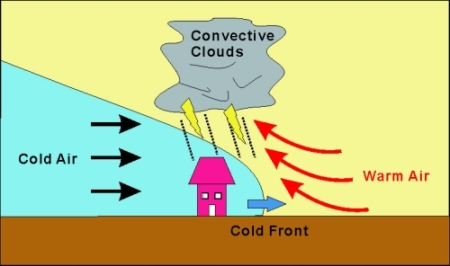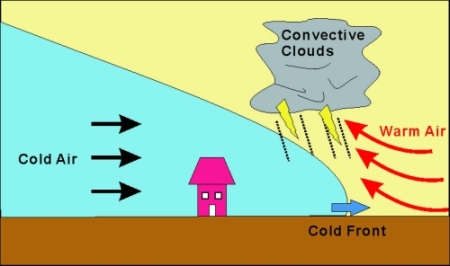"Morning thunder seldom lasts till noon" explained
"Morning thunder seldom lasts till noon" explained
LAM Hon-him
The weather folklore "Morning thunder seldom lasts till noon" means that thunderstorms (Please click here to read "What are thunderstorms?") in the morning usually affect a place for only a few hours and seldom last till the afternoon. To understand this, we need to know how morning thunderstorms form.
Thunderstorms are formed by the uplifting of warm and humid air. There are many factors that lead to the uplifting. Some main ones are solar heating, proximity of low pressure troughs and convergence of two different air streams.
Thunderstorms caused by the uplifting of air under solar heating will only be formed when the temperature is high. Hence such "heat" thunderstorms usually appear in summer afternoon.
In contrast, thunderstorms caused by weather systems, such as a front or trough, can occur at any time of the day. A front is a transition area between the cold and warm air masses. Where the two air masses meet, unstable weather results because of significant differences in temperature, humidity, wind direction and speed between them. Along the front, the warmer and lighter air will then ride on top of cooler air, resulting in rain and thunderstorms. A trough is an area of low pressure where air from higher pressure converges and is forced to lift upwards to form thunderstorms.
From the above discussion, we can see that morning thunderstorms are generally related to the approach of a weather system (front or trough). Weather systems are dynamic and thunderstorms will move with such systems. When a weather system moves fast, the thunderstorms will move away too. Hence the phenomenon of "Morning thunder seldom lasts till noon" (Figure 1 and 2).
Weather folklore usually reflects people's experience in a particular place. The reader should note that it may not be applicable to other places.

Figure 1: When a cold front arrives at the hut in the morning, it brings along thunderstorms.

Figure 2: As the front moves away in the afternoon, so do the accompanying clouds and thunderstorms.
References:
[1] 陽明書局編輯部,1993,十萬個為什麼,輔新書局(in Chinese only)
[2] 陳渭民,2003,雷電學原理,氣象出版社(in Chinese only)
[1] 陽明書局編輯部,1993,十萬個為什麼,輔新書局(in Chinese only)
[2] 陳渭民,2003,雷電學原理,氣象出版社(in Chinese only)